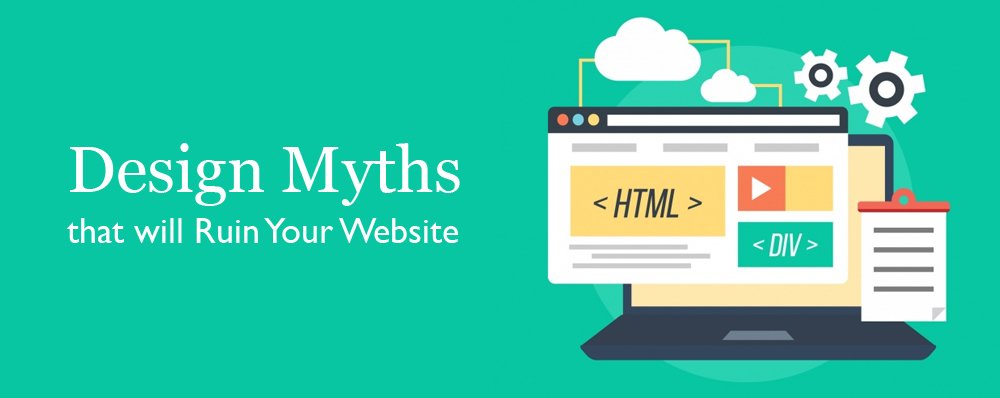- March 29, 2017
- Posted by: papasiddhi
- Category: Mobile app development, Web Development, Website Designing

As a beginner, we often follow certain things based on mere assumptions and fell prey to huge mistakes. This happens because of the lack of knowledge and expertise. Web designing is one industry wherein junior designers and beginners make plenty of mistakes. To avoid this, one must be eager to learn new things about design and understand which preconceived notions are accurate or a myth.
Here we have discussed 3 design myths that are common in the industry, especially among the start-ups and beginners. Unfortunately, these design myths lead to poorer quality design and user experiences harming the overall performance of the site.
Read On.
Smartphone Users are Inattentive and Always Active
According to a study, “68% of mobile page views happen at home.” This means that many mobile users are distracted and involved in multitasking when using their smart devices. Still, too many new web designers are developing apps and mobile websites for “inattentive” and busy users.
We all know the consequences of a website that is not well-designed. Nearly 48% of internet users report that if they come across a business website that isn’t functioning properly on their smartphones, they assume that the business simply does not care about its customers.
On realizing this, you can add these two crucial elements to your design checklist:
– a responsive that doesn’t underestimate user engagement.
– a simple and easily navigable design.
Minimalism is Equal To Simplicity
While minimalism is a style, simplicity is all about the feel and functionality of a website as a whole. Even a complex and extensive design can be made simple. However, simplicity doesn’t mean having the minimal amount of things like UI elements, steps, or interactions.
According to Steven Sinofsky, “Minimalist design decreases the visual surface of a design and its experience, whereas simple design—which he calls friction-less design—decreases the energy required for the experience”.
Hence, keep the design such that the interaction becomes simpler, easier and more intuitive for the end users. That’s the difference between minimalism and simplicity.
Design Everything that is Just Three Clicks Away
Users and visitors do not really care about the exact amount of clicks. Instead, they are concerned about obtaining the information they are looking for and finishing the task they are doing. In addition, users care about whether clicking through will get them to the desired information. If they get disappointed, they may leave without clicking. But if they get what they want in just one click, users will keep on going through as many as 25 clicks the next time they visit your site. Research also reveals the importance of user satisfaction is irrelevant to the three click rule.
Do you have anything to share with us? Feel free to add to the comment section below.
Leave a Reply
You must be logged in to post a comment.
